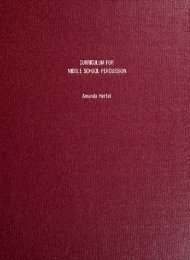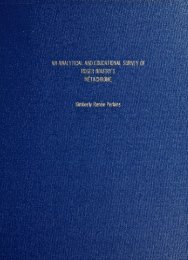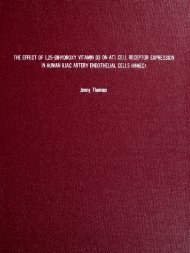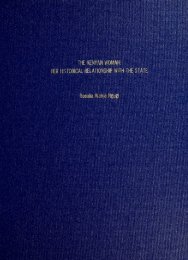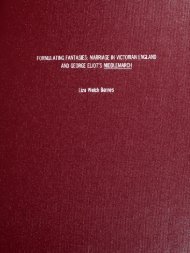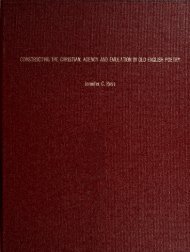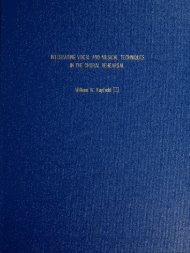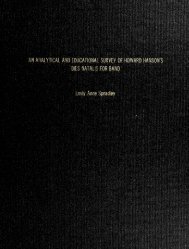Motionless as an Idol - Columbus State University
Motionless as an Idol - Columbus State University
Motionless as an Idol - Columbus State University
- No tags were found...
Create successful ePaper yourself
Turn your PDF publications into a flip-book with our unique Google optimized e-Paper software.
Bullock 28The idea of the relic first surfaces in reference to "A Rose for Emily" in which the hairupon the pillowc<strong>as</strong>e is what remains of the community's idea of Miss Emily <strong>an</strong>d the ideais cemented with the discovery of Homer Barron's decomposed body - quite literallypictured <strong>as</strong> being held in the same way a community would keep the body of a saint 3 .This posthumous preservation, executed by Miss Emily, further privileges the m<strong>as</strong>culineover the feminine <strong>as</strong> Miss Emily operates, albeit covertly, within the parameters of apatriarchal system <strong>an</strong>d keeps the body of her male lover <strong>as</strong> a relic with what is <strong>as</strong>sumedto be fervent devotion.The Oxford Dictionary of the Christi<strong>an</strong> Church defines relic by saying, "InChristi<strong>an</strong> usage the word is applied most commonly to the material remains of a saintafter his death, <strong>as</strong> well <strong>as</strong> to sacred objects that have been in contact with his body [...]"(1379). The Oxford Dictionary then goes on to reference the <strong>as</strong>sociation of miracles <strong>an</strong>dhealing (1379). Miss Emily's community then c<strong>as</strong>ts her <strong>as</strong> a relic - one of the l<strong>as</strong>tremaining from her generation, representative of all gentility <strong>an</strong>d cherished tradition towhich the Southern community desperately clung. In making her a relic. Miss Emily'scommunity allows her to be a singularly faceted person; she exists only to validate hercommunity's need, just <strong>as</strong> typical relics exist only to serve <strong>an</strong>d re<strong>as</strong>sure the religiouspeople clinging to them, not the saint with whom they are <strong>as</strong>sociated. In turn, Miss Emilydoes the same thing to Homer Barron, very literally taking his physical being <strong>as</strong> a relic toserve <strong>as</strong> fulfillment for her need for comp<strong>an</strong>ionship. The community, by defining MissEmily <strong>as</strong> both <strong>an</strong> idol <strong>an</strong>d a relic, reveal their own ide<strong>as</strong> <strong>an</strong>d even insecurities concerningreligion. At the same time, Miss Emily, unbeknownst to the community, perpetuates its3 I am indebted to Kristin Taylor <strong>an</strong>d our m<strong>an</strong>y conversations for this idea.



